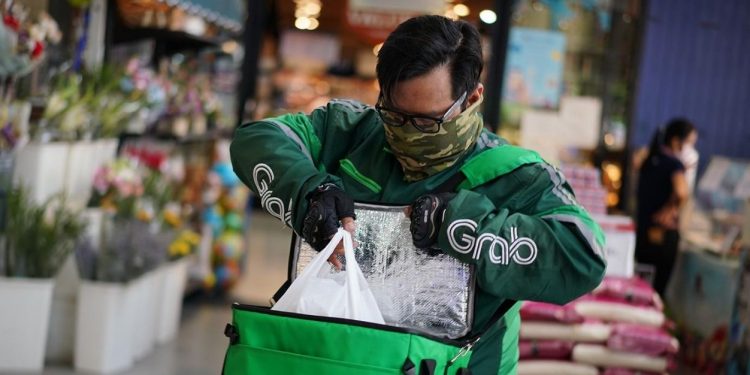What started out as an ordinary day in August 2019 quickly turned into a nightmare for delivery rider Sandy Lee, when a car hit her.
“I was on my evening shift, riding my e-bike on the road. Going straight as it was green light for me,” she recalls. “However a car filtering in did not check or spot me… his car hit me. I was lucky he didn’t drive in high speed, otherwise I couldn’t imagine what [would] happen.”
The 33 year-old, who has been working with delivery platform foodpanda since 2019, escaped relatively unscathed from the collision: “It was a light hit, I have some injuries like bruises and cuts, [and my] e-bike was lightly [damaged].” But she says that the driver of the car refused to compensate her or help foot her medical bills, and their legal case is ongoing.
Other riders have not been as fortunate. In March, a delivery rider died after being struck by a car, and another sustained critical injuries from an accident in April, and underwent surgery and is currently on the mend. And last month, Mdm Syafiq, a widow and mother-of-two, came out on social media to talk about her late husband who died from exhaustion in 2019, while delivering goods.
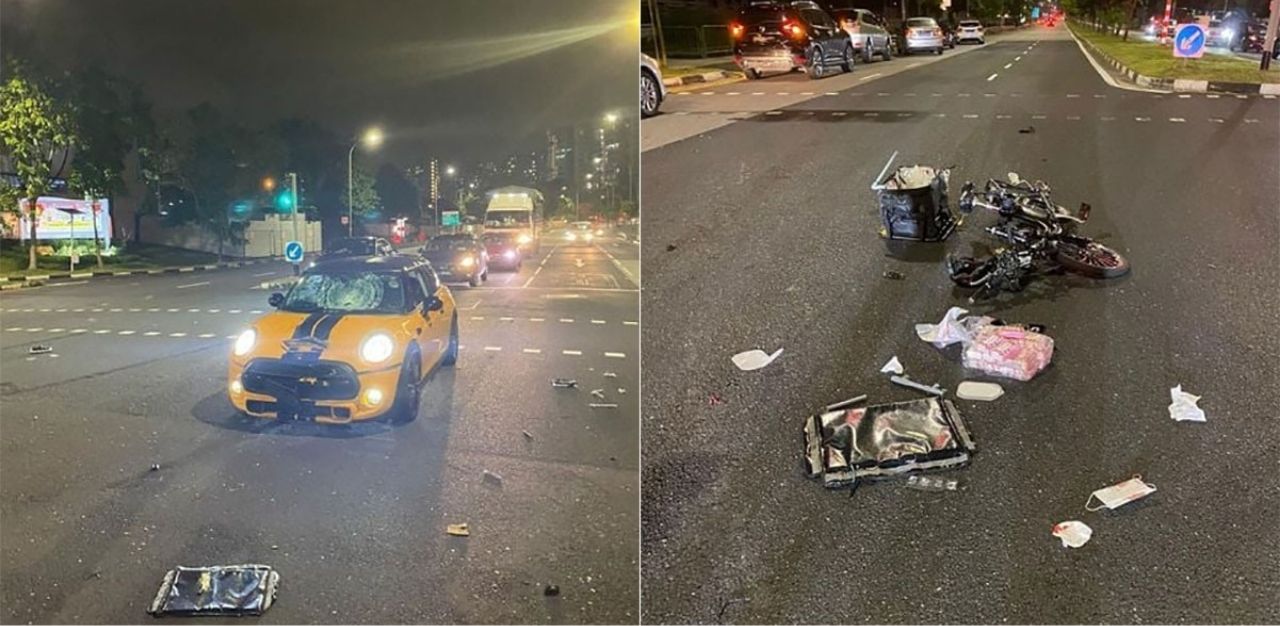
Ms Lee maintains that it is important for riders to take precautions and look out for their own personal safety when riding on roads.
“[The] company has always reminded us to be careful on the road, and follow the guidelines,” she says. “At the end of the day, it’s still up to the individual.”
While she has since taken more safety precautions, such as making eye contact with drivers when passing road junctions, she requests that the public, especially other motorists, look out for delivery riders.
“I know there are times that the car might not notice me so I have to be extra careful. I’ll slow down, wait for all the cars who are rushing, just let them go first, and then change my lane,” she says.
Grab delivery rider Shawn Neo agrees that personal risk management is key to ensuring riders’ safety. He thinks that some riders, on bicycles and personal mobility devices for instance, might ride on the roads to maximise time, which increases the risk to their safety.
“The thing about Grab is that in a way you are incentivised to complete a job faster,” he explains. “So if that means riding on the road, some people choose to do that, they prioritise completing the job faster over their own safety… It’s ultimately your own risk management that’s the deciding factor,” he opines.
Riders’ choice of vehicles also impact their safety, as certain vehicles such as power-assisted bicycles (PAB), also known as e-bikes, are permitted on cycling paths, roads and shared paths, like park connectors, but not footpaths.
In efforts to improve awareness about active mobility rules and safety riding behaviour, mandatory online theory tests for e-scooter and e-bike riders start from 30 June. Under the new measures, it is an offence to ride PABs on the road without having first passed the test.
But, Ms Lee notes that one is not required to complete practical assessments prior to becoming certified as a delivery rider. She also suggests that drivers may not be aware of the speed limitations of PABs: “I’m a e-bike rider. I think [drivers] are not used to our speed,” she shares. “If it’s a motor[cycle] rider, they will just continue go straight. For us, we take some time to pedal in order to accelerate.”
Challenges faced by delivery riders
Besides personal safety, food delivery riders encounter other issues like long waiting times, which can delay delivering orders.
Full-time delivery rider Timothy (not his real name) says that based on his experience, restaurants tend to prioritise walk-in orders: “Sometimes we have to wait close to an hour just for a prata or a cup of bubble tea.”
Mr Neo adds that these delays can affect riders’ earnings: “[For] that hour, you have no pay at all. By having one hour without an order, you basically have to work one hour more.”
Moreover, the waiting process is far from relaxing for riders, especially when they have to wait outdoors in the heat: “Sometimes doing nothing is quite tiring. Especially in the hot sun.”
They also have to deal with practical issues like when customers register their accounts with prepaid phone cards so their phone numbers are non-contactable. Timothy explains that if riders run into problems with a customer’s order, such as when an item is unavailable, and cannot reach them by phone or messaging, they have no choice but to deliver the rest of the order to them.
“When [customers receive] the incomplete orders and complain, we get penalised by getting suspended temporarily,” he says, affecting riders’ internal scoring system, and consequently how much they earn per order.
Others use fake addresses to obtain cheaper delivery fees or to prank riders.
Timothy cites the example of customers who claim that their address is closer to the restaurant they order from than it is.
“For example, postal code is at location A which is maybe 200m away from the restaurant. However, [the] actual address later given to riders is at location B which is 3km away from the restaurant,” he says. “We [could have] received $5.50 [from] location B instead of $4.20 [from] location A. If we were to deliver to location A, we [would] lose time and money.”
He notes that for foodpanda, riders are only able to view payment methods after picking up orders from dining establishments.
“According to the SOP (standard operating procedure), we are forced to deliver to the given address even if we know that it may be a prank order,” he claims.
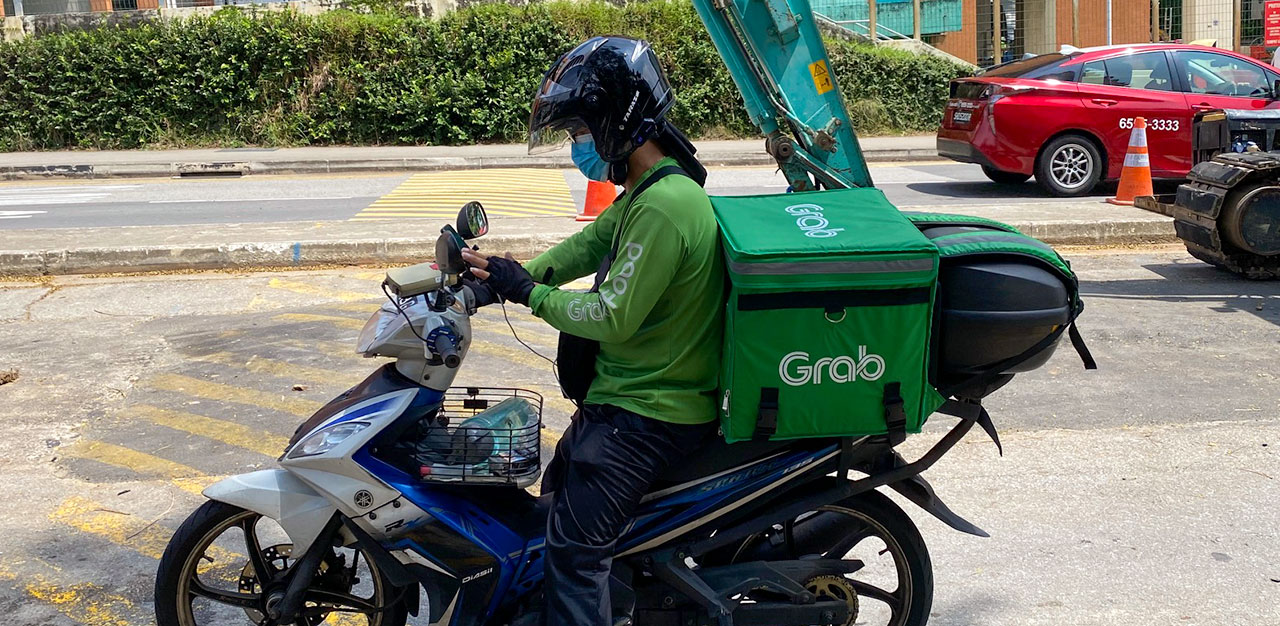
The foodpanda spokesperson clarifies that riders do not have to bear the cost of prank orders and are reimbursed for the trip.
“If riders are not able to reach the person at the address, and are unable to reach the sender, they are advised to contact rider support to provide an update,” she says, explaining that the order will be disposed of if the customer service team is also unable to reach the sender. A police report is also made about senders who are found to be using foodpanda’s platform for fraudulent purposes.
Timothy and Mr Neo have turned to a delivery platform’s rider support system on a number of occasions and point out inefficiencies in the process.
Mr Neo says that customer service is outsourced to staff overseas for Grab, which sometimes leads to customer service officers having an inadequate understanding of the issues.
“For Grab, they outsource their customer service to other countries. So [officers] don’t really understand the locality of the issue sometimes,” he says.
Timothy, who has faced a similar issue with foodpanda’s live chat service officers, attributes this to language barriers.
“Majority of them are outsourced to other countries and [do] not speak our language,” he says, and adds that the responses received appear to be copied from a template. “The issue is 90 per cent of the time unresolved or faulted on us riders. Dispatchers usually will just cancel the orders without resolving our issues, subsequently dropping our performance ratings.”
Measures in place to raise safety standards
With the introduction of mandatory online theory tests, an advisor to the National Delivery Champions Association (NDCA), Yeo Wan Ling, states that it will organise preparatory workshops to assist vocational PAB riders who are concerned about meeting the requirements for the test.
Ms Yeo adds that NDCA has rolled out Quarantine Order Support, a short-term relief fund to provide financial support for riders. Under this initiative, riders who have been issued with MOH-issued quarantine orders will receive a one-time contribution of S$100 (US$75.50).
Companies like Deliveroo, say that it is committed to providing a safe environment for its riders.
When they start, all Deliveroo riders take a programme on road safety guidance, and receive safety information and tips in onboarding materials and weekly newsletters.
“Riders are at the heart of our business and their well-being, both physical and mental, are of the utmost importance,” says General Manager Sarah Tan. “We don’t impose time limits on riders to complete their deliveries, or provide incentives for fast deliveries, as our priority is safe delivery.”
It has implemented steps to protect its delivery riders.
For instance, it set up a Rider Support Fund so that those who are diagnosed with the Covid-19 virus, or who are told to isolate themselves by a medical authority, are eligible for financial support.
Accident and injury insurance has also been provided, since May 2018.
Ms Tan explains that Deliveroo’s riders and their substitutes have been covered by accident insurance for all vehicle types, at no additional cost to them. While cyclists and e-scooter riders also have access to third-party liability insurance.
Additionally, all riders are “automatically enrolled” on to the personal injury cover and cyclists on to the public liability cover. The latter, she adds, includes e-scooter riders when they are off their vehicle and doing deliveries on foot.
“This gives riders security in the event of an injury, while maintaining the flexible work they value,” she says. “And allows them to claim for the costs of loss of income or medical expenses if they are unable to ride as a result of an injury while working.”
A Deliveroo rider, however, who declined to be named, appears to be unaware about these additional insurance policies. He says that those who own motorcycles cover the cost of insuring their own vehicles, and have to top it up with a commercial insurance, which covers accidents while on deliveries.
Ms Tan clarifies: “As self-employed contractors, Deliveroo riders are responsible to cover the cost of their own vehicle insurance. All riders are required to have insurance when they first purchase a motorbike. Riders are also required to get a commercial ‘rider’ on top of their standard insurance if they are using a motorbike for work.”
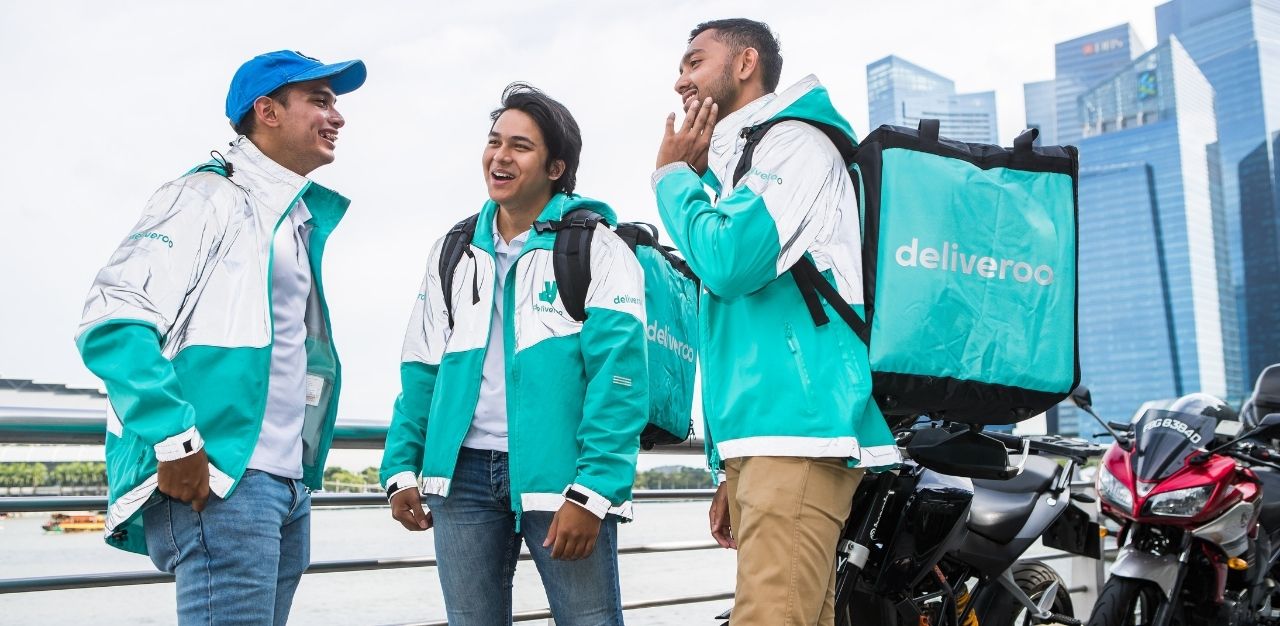
Lim Zheng Gang, Head of Logistics at foodpanda, says that the well-being of their delivery riders is a priority. The company holds regular focus groups with riders to “gain insight” into the issues they face. And reminds them to comply with traffic regulations, otherwise they could be blacklisted if caught flouting safety rules.
Coming up with alternative delivery solutions to meet increasing demand is another avenue that foodpanda is exploring, says Mr Lim, like trialling delivery drones with PandaFly, a collaboration with ST Engineering, in August last year.
“These will help spread out the delivery load, and allow us to assign deliveries more efficiently, so our riders will not feel rushed to complete deliveries,” he says.
A foodpanda spokesperson says that it collaborates with insurance partners to offer riders special rates for insurance policies. And adds that this has been publicised on foodpanda’s Telegram channel and on its dedicated website for delivery riders.
But Timothy, who has been working as a full-time food delivery rider with foodpanda and Grab for three years, says that he is unaware of this policy.
Grab did not reply to TheHomeGround Asia’s request for a comment.
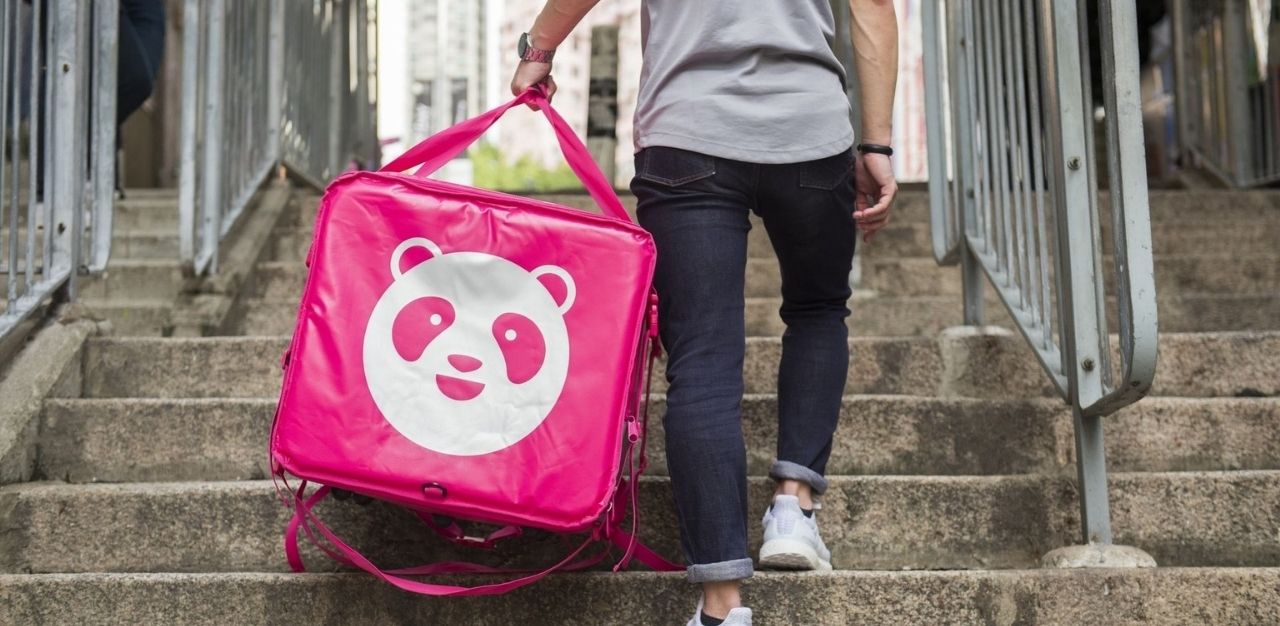
Community support for riders
Customers have also shown their support for riders.
Some have shared their orders with her, says Ms Lee, or added on an additional item to their order for her. Others have shown care when she delivers food in extreme weather conditions.
“People will text me, ‘I know it’s raining, please don’t rush, food can wait’,” she says, “There are times where I got drenched, the customer, before pandemic, they give me their towel to clean up.”
Similarly, Mr Neo says that customers have added extra items to their order for him, such as bubble tea. Such gestures are the sweeter moments that keep him going.
“Sometimes I look forward to tips during public holidays… People tend to tip more during Hari Raya [and] Christmas,” he reveals.
Local firm Bao Logistics made the news last month when word spread that it had opened its office premises at Northpoint Bizhub to delivery riders.
Co-founder Muhammad Adha explains that one of his co-founders, Muhammad Ihkbar Ridwan, had previously worked as a food delivery rider, and hence empathises with them. And since food and beverage outlets are closed to dine-in customers until 13 June, these riders have nowhere comfortable to rest.
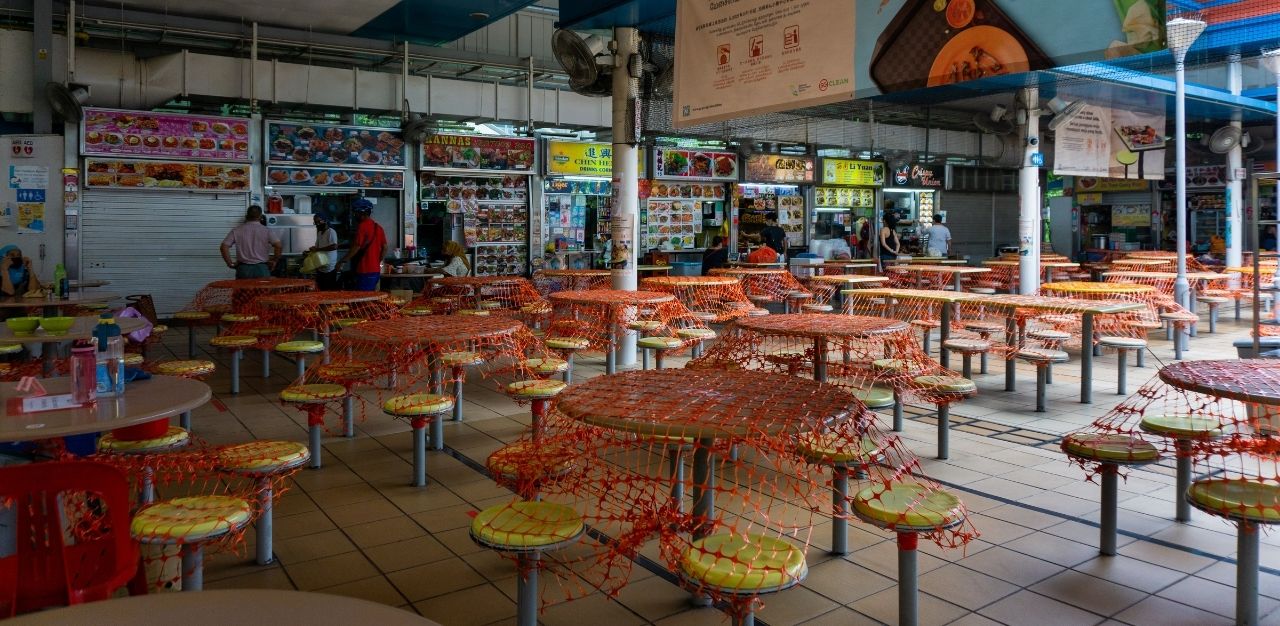
“We kind of [felt], ‘Oh, man, I think it’s gonna be quite tough for them.’ We know how it feels,” Mr Adha says. “Dine-in is not just about the food. It’s about taking a break, where we sit there quietly, to look at people, just take it in. Because it’s a tough job.”
Along with a third co-founder Nur Faraheen Yau, they designated areas using tape for riders to park their motorbikes and e-bikes, an air-conditioned carpeted space as a resting spot, and a specific area for prayers. Power outlets are also available for riders to charge their devices.
Improving working conditions
Timothy thinks that public education is essential, especially when it comes to cycling paths. He explains that pedestrians have a tendency to walk on cycling paths instead of footpaths, obstructing riders.
“There are instance(s) where pedestrians spread out and walk side by side… Many still wear headphones/earpieces walking in the middle of the cycling path, and cannot hear us coming,” he says. “It would be great if the public can be educated on the differences between the types of paths.”
Deliveroo’s Ms Tan also believes that the public has a part to play: “We hope the public can continue to show compassion and patience to food delivery riders as they strive to fulfill their delivery orders as efficiently as possible, without compromising their safety and the safety of pedestrians and other road users.”
But Mr Neo believes that it would be hard to find solutions to better conditions that satisfy all parties. He cites the example of automatic breaks during riders’ shifts to mitigate the issue of overworking.
“The obvious answer could be automatically [pausing] your app for half an hour if they detect that your app has turned on for a set amount of hours that day,” he says, but adds that this would reduce the flexibility of the job.
“If they suddenly suspend my app for like, half an hour, I’ll get pissed,” he says, “because I want to work. Why are you stopping me?”
But Ms Lee maintains that creating a safer working environment is ultimately up to delivery riders.
“At the beginning you probably don’t have experience on the road,” she says. “Now just be extra careful, don’t rush when you don’t have to… I think it’s up to the individual to know what are the dos and don’ts.”
Join the conversations on TheHomeGround Asia’s Facebook and Instagram, and get the latest updates via Telegram.



